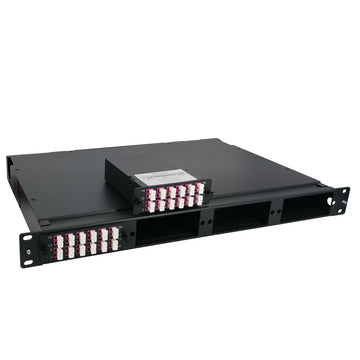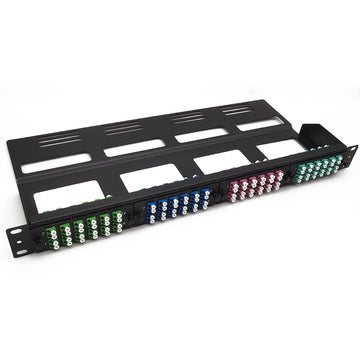Specification Differences among GPON XG-PON and XGS-PON
With telecommunication development these years, GPON has evolved to XGPON and XGS-PON step by step.
PON has become the mainstream technology of FTTx network construction, but with users’ strong demands for high-bandwidth such as OTT Video and 4kTV, commercial use of 10G GPON has been put on the agenda by many operators. Moreover, from the perspective of technical standards and industrial chain development, 10G GPON has been improved, which is the best choice for FTTH high-bandwidth network construction.

What Is GPON?
GPON stands for Gigabit Passive Optical Networks. GPON and Ethernet Passive Optical Network (EPON) are two major current PON standards. Their topology structures are basically the same. As the first choice in many FTTH deployment scenarios, the PON solution has several prominent benefits:GPON is a point-to-multipoint access mechanism. Its main characteristic is the use of passive splitters in the fiber distribution network, enabling one single feeding fiber from the provider’s central office to serve multiple homes and small businesses.
What Is 10G GPON?
10G GPON has two standards, XG-PON and XGS-PON
- XG-PON, 10-Gigabit-capable passive optical network, provides asymmetric 10G GPON transmission (Maximum downstream line rate: 9.953 Gbit/s, Maximum upstream line rate: 2.488 Gbit/s ).
- XGS-PON, 10-Gigabit-capable symmetric passive optical network, provides symmetric 10G GPON transmission (Maximum downstream line rate: 9.953 Gbit/s, Maximum upstream line rate: 9.953 Gbit/s ).XGS-PON is a higher bandwidth, symmetric version of GPON.

Specification differences between 10G GPON and GPON
The following table lists specification differences between the two technologies.
| Specifications | GPON | 10G GPON | |
| XG-PON | XGS-PON | ||
| Wavelength | Downstream: 1480-1500 nm | Downstream: 1575-1580 nm | Downstream: 1575-1580 nm |
| Upstream: 1290-1330 nm | Upstream: 1260-1280 nm | Upstream: 1260-1280 nm | |
| Center wavelength | Downstream: 1490 nm | Downstream: 1577 nm | Downstream: 1577 nm |
| Upstream: 1310 nm | Upstream: 1270 nm | Upstream: 1270 nm | |
| Maximum Line Rate | Downstream: 2.488 Gbit/s | Downstream: 9.953 Gbit/s | Downstream: 9.953 Gbit/s |
| Upstream: 1.244 Gbit/s | Upstream: 2.488 Gbit/s | Upstream: 9.953 Gbit/s | |
| Frame structure | GEM | XGEM | |
| Maximum Physical Transmission Distance | 60 km | 100 km | 100 km |
| NOTE:The physical reach is defined by split ratio, optical module size, and fiber quality. | NOTE:The physical reach is defined by split ratio, optical module size, and fiber quality. | NOTE:The physical reach is defined by split ratio, optical module size, and fiber quality. | |
| Maximum Split Ratio | 1:128 | 1:256 | 1:256 |
| NOTE:The actual split ratio depends on the optical module model and fiber distance. | NOTE:The actual split ratio depends on the optical module model and fiber distance. | NOTE:The actual split ratio depends on the optical module model and fiber distance. | |
From the chart we can know that the biggest difference between GPON, XGPON and XGSPON is the transmission rate.
- The G-PON maximum downstream line rate transmission is 2.5 Gbit/s, and maximum upstream line rate is 1.25 Gbit/s
- The XG-PON maximum downstream line rate transmission is 10 Gbit/s, and maximum upstream line rate is 2.5 Gbit/s
- The XGS-PON maximum downstream line rate transmission is 10 Gbit/s, and maximum upstream line rate is 10 Gbit/s
10G GPON FTTH scenario
- GPON and 10G GPON mixed
10G GPON and GPON share one ODN, but because of different wavelength between 10G GPON and GPON, a passive wavelength division multiplexing device WDM1r is needed.

Advantage: sharing one ODN, save the ODN construction cost
Disadvantage: 10G GPON ONU and GPON ONU are complex, difficult to maintainance

among GPON XG-PON and XGS-PON. If you want to know more details about GPON/XG-PON/XGSPON products, please email to sales@lightoptics.co.uk.












